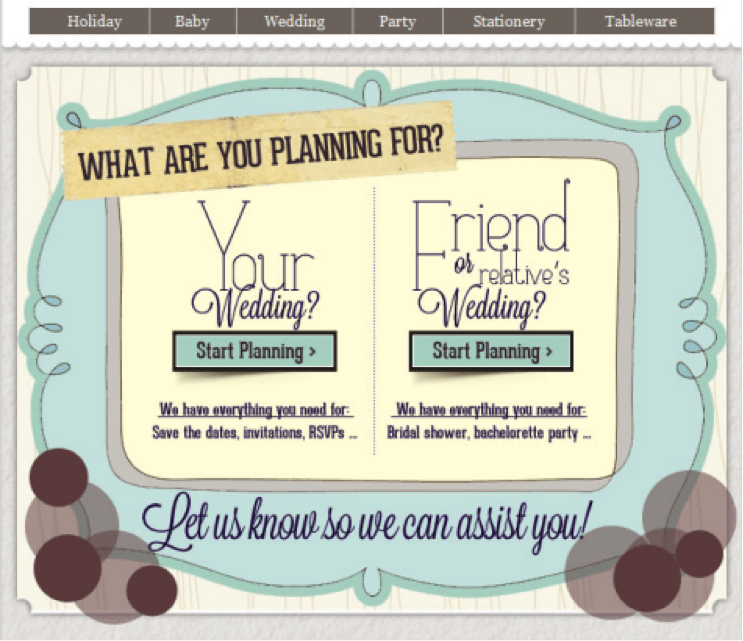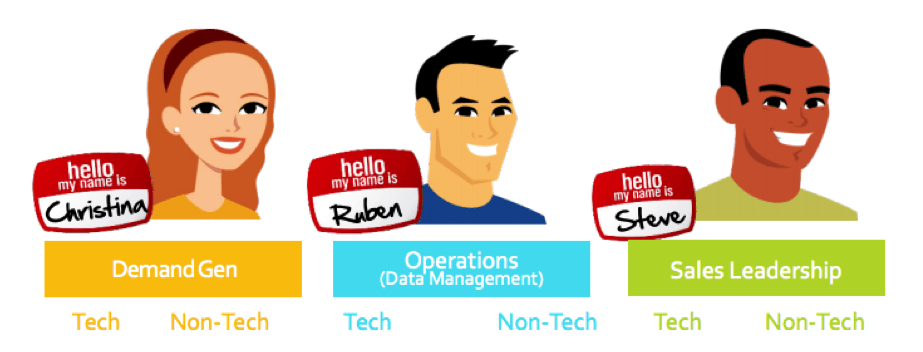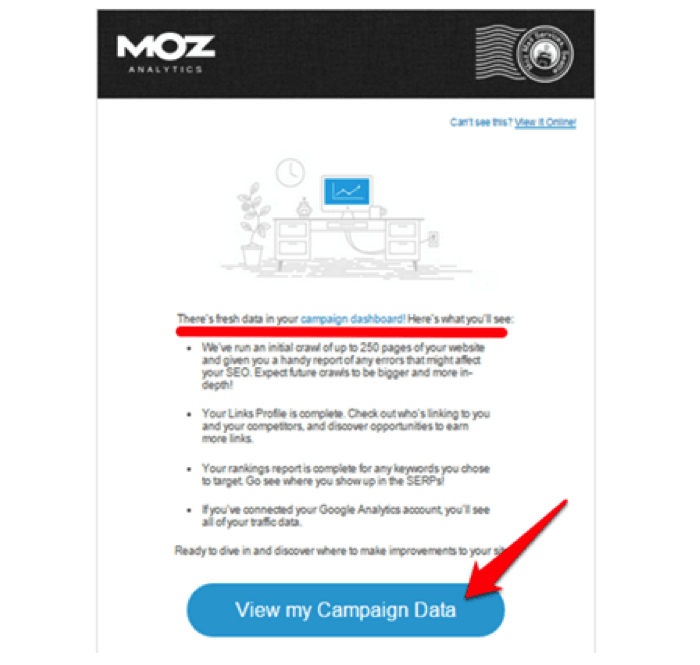We are living in the era of personalization.
We have an abundance of data at our fingertips, but we don’t always make the most of the opportunity it provides.
Many businesses have been incredibly slow to take up personalization. In fact it has been reported that only 5% of companies personalize extensively. That is a shockingly low figure.
So, why are we failing to use personalization in our marketing strategies?
It certainly isn’t because of ignorance of the benefits. Marketers seem to be aware of the value, as 94% of companies say that personalization is critical to current and future success.
Instead, it seems that we don’t know how to personalize. With 60% of marketers admitting that they struggle to personalize content in real-time, it’s clear that there is a little confusion about how to implement it.
When it comes to personalizing your email marketing, you don’t have to struggle. There are relatively simple, yet sophisticated, ways to use personalization in your emails that go beyond just using a name.
Here are six ready-to-implement ways to use personalization that will propel your email marketing.
1. Ask the Right Questions
A straightforward, effective way to segment your audience for personalization is to simply ask the right questions. Asking customers their reasons for visiting your website, becoming a user, or subscribing to your email can be remarkably easy, but invaluable. It can give you insightful data that can lead to your business sending incredibly targeted emails.
Let’s take a look at this in action. Paper Style, a wedding specialist website, was experiencing a lackluster reaction to their emails. In an attempt to jumpstart their email marketing, they decided to incorporate personalization into their campaigns.
They recognized that not everyone was joining their site for the same reason, yet they were all receiving the same email. To combat this, they developed a strategy that would make their emails more personalized.
They simply asked customers “What are you planning for?” There were two possible answers: your wedding or a friend or relative’s wedding.
Based on the answer, customers were assigned to one of two separate timelines and sent 5 different emails that were targeted to their group.
The reaction to these new, targeted emails was astonishing. Paper Style’s open rate increased by 244% and their click-through rate increased by 161%. It was a short, easy question, but it made the emails much more personalized, and evidently worked for the business.
2. Build Customer Personas
As we’ve seen with the Paper Style example, segmenting your customers works. But, it can be taken even further using customer personas.
Customer personas are built by using a multitude of data. Instead of asking a single question, like Paper Style, you can group customers together using a mix of attributes and actions they take.
One case study that proves the value of customer personas is from the B2B sales and marketing firm NetProspex. They wanted to better understand their visitors and develop a more personalized experience for customers. Using website behavior and download history, they grouped each customer into one of three personas.
Using this data, each persona was sent a more personalized series of emails.
For example, if a lead’s activity identified them as a “Christina” (see images above), the firm knew the lead was more interested in Demand Generation. Based on this, the nurturing emails the lead would get were all about Demand Generation and free resources more targeted to their needs.
After implementing customer persona-based marketing, NetProspex saw a 111% increase in email open rates. It was a clever personalized strategy that gave customers a highly targeted experience.
3. Make Use of Location and Time
It’s no secret that certain times of day prove to be better than others when it comes to sending emails. Your customers might love getting an email at 8:00 a.m., or they might respond better to getting one at 5:00 p.m. Either way, we are sure you have A/B tested this and found the optimum time to send your emails.
However, it’s likely that not all your customers are in one location or respond to emails at the same time. They may be all around the world, scattered across different time zones, and possibly receiving your emails at non-optimal times.
To fix this, why not use your customers’ data to send your emails at the best times?
That is exactly what BustedTees decided to do.
Like so many other businesses, they were sending out one email to all their subscribers at the same time regardless of location. This email was sent on Los Angeles, California, time and was suited for an American audience. The brand recognized that this wasn’t working. As their marketing director, Jonny Cottone, explains, they were “underserving our international customers.”
They began segmenting their subscribers into different time zones, with the aim of sending emails to be received at a reasonable time for all subscribers. Emails were sent to arrive in inboxes at 10:00 a.m. for every time zone. Results for this test were underwhelming, as BustedTees experienced only a small bump in open rates, so the business decided to delve further into personalization.
Working with marketing and sales, they set out to send an email at a personalized time to have the most impact. They also worked to make the content more relevant to subscribers. Using customer data, they analyzed subscribers’ past open histories and sent an email at the most optimum time to be opened for that subscriber.
Their extensive tests on timing proved to be a winning formula for BustedTees. The reaction from customers was significant, as the company experienced an 11% higher click-through rate. Sales also were positively affected, resulting in an 8% uplift in email revenue overnight, proving timing is vitally important for emails.
4. Set Up Automated Behavioral Trigger Emails
Behavior-triggered emails are real-time reactions to how your customers are using your product.
When Facebook emails you because you haven’t logged in for 5 days, that’s a behavior-triggered email. They work amazingly well. If you aren’t using them already, you should be!
Trigger emails have a 152% higher open rate compared with traditional emails. They are a valuable communication tool and convert window shoppers into lifelong customers.
Trigger emails, although personal, are easily automated and can be sent to customers for multiple actions: up-selling and cross-selling, welcome, re-engagement, and the list goes on. Also, depending on your business, there are several specialist tools out there for sending great trigger emails. Intercom.io for B2B, GetVero.com for ecommerce and SparkPage for B2C.
Analytics tool Moz delivers unexpected but ingenious trigger emails that are a perfect example of personalization. They send an email to a user when Moz has uploaded new data to the user’s account. It simply informs them that there is new data to see. There also is a conspicuous call-to-action button that states “View My Campaign Data.”
It’s a clever use of behavior triggers, as it brings customers back to their website and gets them using the product. It’s an expertly timed and implemented reminder that Moz is there and has value for the customer.
5. Personalize Your Business
Personalization doesn’t have to be limited to using your customers’ data. You also can personalize your brand. Personalization can soften the edges of big business and add a level of human connection between you and your customer.
An example of this at work is from HubSpot.
They ran several tests in an effort to make their emails more personal and increase customer engagement. They tested sending two emails. One was from the company, HubSpot. The other was more personal. It was from someone on the marketing team.
The results proved to be interesting. The click-through rate for the email from the company was 0.73%. But, when the email was from someone on HubSpot’s marketing team, the click-through rate jumped to 0.96% and generated 292 more clicks. The email sent by a real person proved more likely to be clicked. This also showed customers’ positive reactions to a more personal business.
HubSpot’s tests in personalizing their emails worked well, but you can go even further to make your business more informal and personal. Test aspects such as a conversational tone, pronouns like “we” and “I,” and generally making your emails seem like they are from an actual human. Customers respond to it.
6. Match Personalized Emails and Landing Pages
Although personalizing your emails is a valuable step toward targeting your customer more effectively, there is more that your business can do. You can pair personalized emails and landing pages to push your success rate further.
Not only should your email and landing page have a consistent look and copy, they both should have the same personalized call to action for the customer. This will lead to the customer having a unified experience, which will make them more likely to convert, as you are showing them personalized content based on data.
Nuffield Health, a fitness organization, decided to make this part of their strategy, and the results were impressive.
Their aim was to increase membership subscriptions and generate more leads by pairing personalized emails and landing pages. They proceeded to build several landing pages that matched different customer segments and write custom emails for each segment. Both the emails and the landing pages contained similar content with the same focus that aimed to convert customers based on their specific interests in the business.
The plan worked, as Nuffield Health experienced a substantial increase in click-through and conversion rates. They went from a 1% conversion rate from past campaigns to 8%. It proved that customers would respond well to a more personalized and targeted campaign that was in sync across all areas of their contact with the business.
Get Started with Personalization
As you can see from the above case studies, personalization works. It gets customers engaged with your business and can enhance your email marketing strategies.
It’s also an attainable marketing strategy for your business. Focus on what data you have or could collect on your customers and see how it can be used. It’s simpler than you think to start today.
If you have any questions about personalization or have any other great examples, leave a comment below. I’d love to chat!
About the Author: Emma O’Neill is a content creator for SparkPage, a platform which lets marketers test and optimize their customer lifecycle messaging. She frequently posts on SparkPage’s “Journey to the First Million Users” blog.




Comments (19)